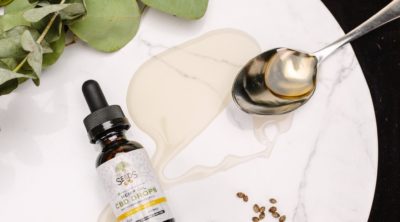
The side effects of lemon balm can be effectively dealt with, provided one is careful about its dosage and frequency of use.
Lemon balm is known by a myriad of names like Melissa, common balm, blue balm, sweet balm, honey plant, garden palm, and bee balm to name a few. The generic name given to this balm comes from the Greek word ‘Melissa‘, meaning bees, since it was primarily used to coat beehives in the hope that when the bees returned, they’d bring more bees with them, due to its alluring scent.
Because of its enriching lemony scent, the balm is called so, and grows in large numbers during the months that fall between June and September. It can also be used in food, tea concoctions, and even sweet dishes, given its lemon-based flavor. It comes from the mint family, and grows largely in parts of the Mediterranean and Europe. With lemon balm growing in popularity among the people, there have been side effects noted over the course of time, from its repeated use.
Benefits and Side Effects
Benefits
- Antiviral attributes
- Antifungal properties
- Helps those suffering from insomnia
- Treats those suffering from Graves disease
- Stress levels can be significantly altered
- Soothes one’s nerves
- Helps those with fever/gas problems / stomach issues
- Treats anxiety
- Antibacterial properties
- Treats those suffering from nerve disorders
- Mosquito repellent
- Lowers blood pressure
- Helps those experiencing indigestion
- Heightens one’s appetite
- Can be used to treat genital sores
- Memory enhancing
Side Effects
- Can affect those suffering from hypothyroidism
- Not advisable for those who are breastfeeding/pregnant
- Those suffering from glaucoma should cease the use of this herb
- Can cause mental impairment and drowsiness
- Increases pressure inside one’s eyes
- Nausea
Dosage and Tea Recipe
It is important to first understand how the dosage of this herb is supposed to be managed, when ingested in supplement/herb form. Although effective, one needs guidance during this time on how to take these.
Directions for Use
If you’re taking any prescription/non-prescription drugs, you need to mention these to your doctor, so that he can advise you on how to take the supplements. When drinking it in tea form, you need only 1.5 to 4.5 grams of lemon balm added to it. This means that when using the leaves during the boiling process, you need to put just the right amount as mentioned, in about 150 ml of water.
Extracts that are concentrated can be used in doses of 160 to 200 mg for those suffering from insomnia. It should be taken roughly an hour or thirty minutes before going to bed. Tinctures can be used ranging from 2 to 3 ml in doses, three times a day. For those suffering from lesions, topical-based ointments of this herb can be applied 3 to 4 times a day. People suffering from diabetes or other health issues, should consult a pharmacist or doctor about how safe the use of this herb is.
Lemon Balm Tea Recipe
The lemon balm tea mixture below is effective, but should be taken thrice a week, and not on an everyday basis.
What You’ll Need
- 1 cup of rosebuds
- 1 teaspoon of honey
- 2 tablespoons of dried lemon balm leaves
- 1 cup of orange blossoms
Method of Preparation
Using only the leaves from the lemon balm herb, add these along with the orange blossoms and rosebuds after you’ve thoroughly boiled a mug of water. Once the ingredients are in, leave these aside to steep for two minutes (put a lid over the mug when this happens) until it leaves the water saturated with the contents properties. Before drinking your herbal tea, add in your honey for sweetness, followed by the rosebuds and orange blossoms.
The properties of lemon balm can be taken advantage of, but it’s how you use this and how often you take it that will determine the outcome of your health eventually. Have a safe tomorrow.
Disclaimer: The information provided in this article is solely for educating the reader. It is not intended to be a substitute for the advice of a medical expert.


